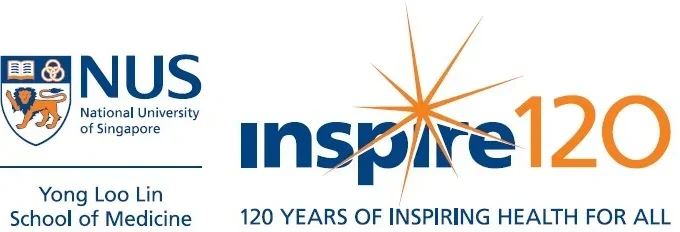Soaring Beyond the Bounds of Her Illness, the Invisibility of Lymphedema
Published: 21 Jul 2023

Photo Credits to Arifah
Since the age of 19, Arifah has observed a persistent dissimilarity between her two legs, with her left limb appearing almost twice as large. Comfortable loose-fitting pants or maxi dresses are what you will see her often in, to keep her swollen limb comfortable and out of sight. When indoors, there is an endless cycle of wearing compression garments, leg elevation, consumption of painkillers and sufficient bed rest to manage this debilitating condition. Unknown to many, Arifah has primary lymphedema.
Lymphedema, or LE, is a chronic and progressive disease that arises from an impaired lymphatic drainage system, where lymph fluid accumulates in the tissues and results in painful limb swelling.
The body’s lymphatic system is a network of vessels that connects the lymph nodes, tonsils, thymus and spleen. Operating like the body’s “sewerage system”, it primarily ensures that the fluids in the body are at an optimal level, by draining excess fluids that leak out of the blood capillaries into the tissue spaces. The lymph fluids carry antibodies and white blood cells around the body that are crucial to ensuring that the body is capable of fighting against infections and diseases. In primary lymphedema, genetic abnormalities can cause the lymphatic system to become dysfunctional, which presents itself as debilitating symptoms that become more obvious during infancy, childhood or adolescence. Primary lymphedema affects only 1 in 100,000 people worldwide, making it a relatively uncommon occurrence. There is currently no cure for lymphedema, with a lack of public awareness and education about this disease. Secondary lymphedema, on the other hand, affects 1 in 1000 people worldwide and occurs more commonly in cancer patients receiving treatment.
In 2017, as a freshman embarking on her undergraduate degree in NUS Business School and eager to start her university life, much of her time and attention was spent ensuring that her condition is not aggravated and kept under control. This included consulting numerous doctors, enduring failed diagnoses, getting warded for leg infections, as well as taking time off from school mid-semester to undergo surgery on her leg to better manage its condition.
This year, Arifah chanced upon the Lymphedema Society of Singapore, a community that is driven to raise awareness and further support LE patients, where Associate Professor Veronique Angeli, Head of the Immunology Translational Research Programme at the Yong Loo Lin School of Medicine, National University of Singapore (NUS Medicine) and Professor Tan Bien Keem, a Senior Consultant of the Department of Plastic, Reconstructive and Aesthetic Surgery at the Singapore General Hospital, are founding members. Since its inception in April 2020, the society aims to assist patients in the care and management of the clinical problems they face with LE, educate the general public about LE and its prevention, as well as promote interdisciplinary research on its clinical, scientific and social aspects.
Fluid build-up in the tissues is one of the effects of LE, which causes pain and discomfort in the limbs and restricts movement. Arifah’s mobility has been adversely affected in many ways from the weight of her swollen limb. Simple activities such as running for the bus, hiking, or even sitting with her legs down are harder feats, leaving her exhausted from day to day. Arifah rightly describes it, “The heaviness of my leg after a long day, amounts to a large brick tied around it, that I’ve simply learned to accept graciously – as an extension of who I am.”
The lymphatic system supports the body’s immune system by transporting immune cells throughout the body, among other functions such as absorbing fats from the intestines. However, patients with LE do not have a working lymphatic system, making them vulnerable to a host of complications from infections to functional disabilities, skin changes and malignant transformation.
When asked on the progress of LE research, Assoc Prof Veronique Angeli said, “As a whole, lymphedema research has had some Eureka moments in this long journey, in terms of discovering some specific genes responsible for primary lymphedema. When the information process of these specific genes is altered, it leads to the dysfunctional development of the lymphatic vessels, resulting in primary lymphedema. For late-stage secondary lymphedema, inflammation, fat accumulation and tissue scarring have been observed to happen, but there is a lack of evidence as to what exactly triggers these factors.” While some progress has been made, Prof Angeli firmly believes that there remains a lot to be done to treat LE. “It starts from having an improved understanding of the physiological process associated with the disease to identify biological pathways that are responsive to new therapies which can promote lymphatic function, and improve the quality of life of each patient,” added Prof Angeli who is also from the Department of Microbiology and Immunology at NUS Medicine.
Though there’s no cure in sight for LE, Arifah still lives her life to the fullest while making routine adjustments to better co-exist with her condition. Unable to run long distances anymore, she has turned to yoga to keep fit, practising power flow to headstands. Undaunted by her physical limitations, Arifah continues to push the boundaries by travelling extensively, which lasted for a whole month at one point. When she encounters tough days, she expresses herself through art which has helped her remain grounded and manage her emotions well.
Associate Professor Jeffrey Low, a gynaecologic oncologist from the Department of Obstetrics and Gynaecology at NUS Medicine noted that many cancer patients do develop secondary lymphedema after receiving treatment for cancer. He added, “Patients diagnosed with lymphedema typically experience a long-term impact on their quality of life. It is important for patients to be under the care of a multidisciplinary team of healthcare professionals, who can work alongside them in the treatment, management and prevention of lymphedema.”

